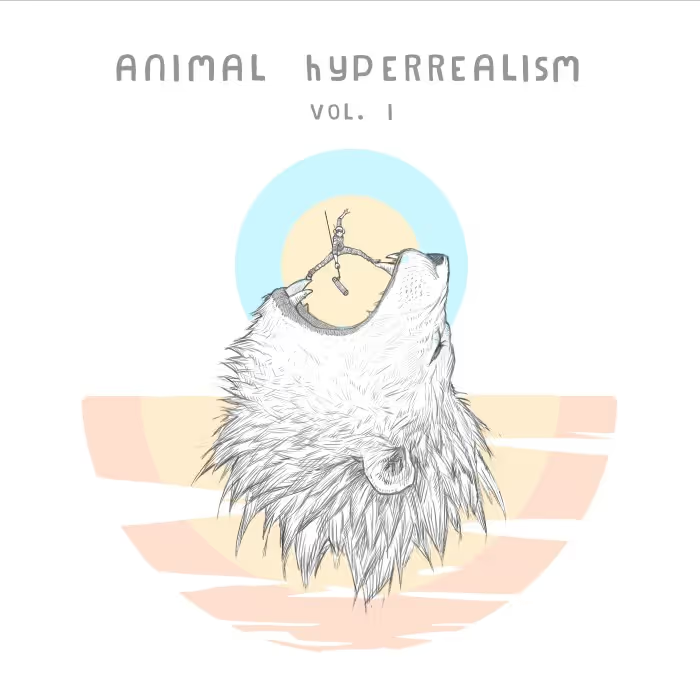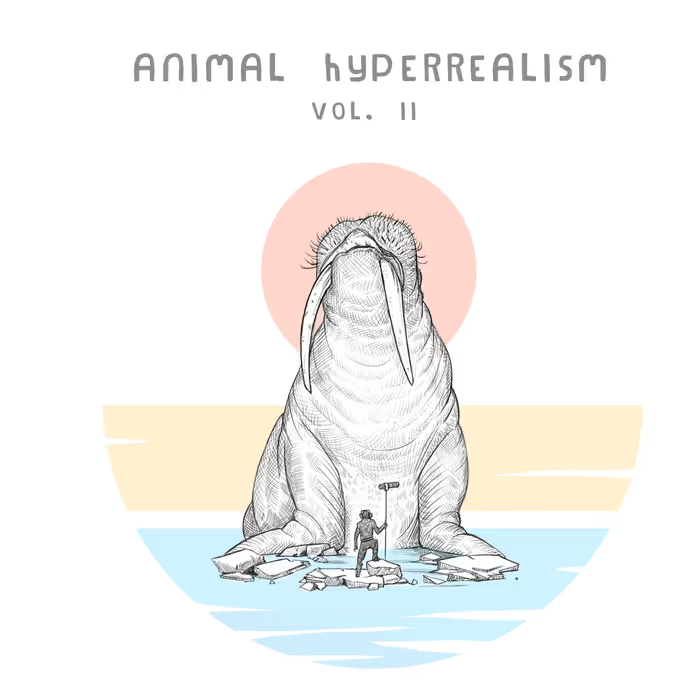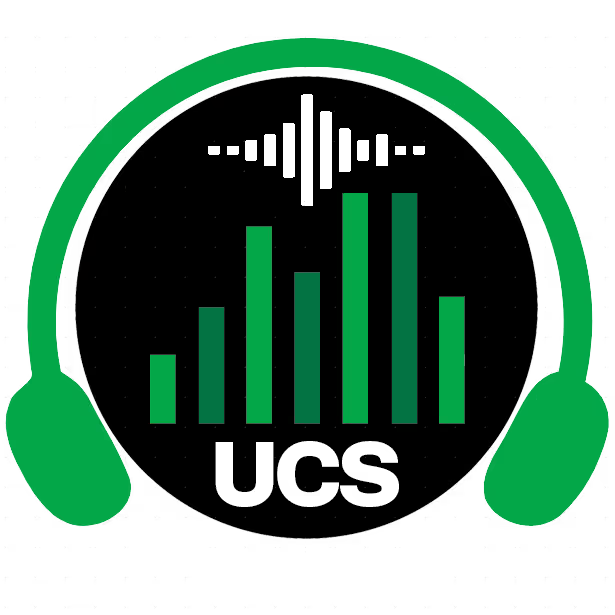Explore the other instalments in this series:
→ Guide to Getting into Game Audio with Megan Frazier – Part 2: Playing Tetris Blind
→ Guide to Getting into Game Audio with Megan Frazier – Part 3: The Actual Interview
When I was 16 I worked at Seaworld San Diego as a vendor, or red smocked laden seller of popcorn, drinks and ice cream during the various different shows. We were a pretty competitive bunch, and whoever sold the most product generally got the most glory and accolades of their peers. Of all shows, the Shamu show was consistently always our biggest draw, and Fourth of July weekend was always our make or break for the year – it was heinously busy. Every year we had a hotly contested title for “Best Vendor” for largest profit generating vendor on the team. Usually the title was decided by the 4th of July’s nightly Shamu show, the busiest show of the weekend.
Couple more important details: At night, vendors at Seaworld were supplied with light up hot chocolate mugs, 20 per tray. The other thing about the amphitheatre is depicted by this pic: the wealthy people always sat in the middle, which at night was well lit because it also hosted our accessible seating for guests. Our product is not a cheap one, and normally we would get balked at for our prices except by the fairly wealthy patrons, causing many vendors to tend towards the center where the wealthy patrons often collected.
For the most part, their strategy was not wrong. The difference that I noticed was 1) it was dark and the dark corners would actually highlight the light up hot chocolate better 2) Families who bought 4-7 hot chocolates were in the corners, wealthy patrons’ families tended to be 2-4. In a moment, I made the strategic position that by working the corners, I could make significantly more than my competitors; the risk being that from a statistical point of view those corners were less likely to buy a $10 hot chocolate mug.
By working the supply side corner and getting refilled three times about 20 mins in, I was already about neck and neck with where the other vendors would FINISH at showtime (45 mins). When I refilled a fourth time, I went to the far supply corner, and didn’t even need to walk up the stands, the families LITERALLY walked to me. I was refilled walking back by my back-of-house supplier minimizing my downtime and finished the 45 min intermission in one of those hallways, as again all those families walking up to me throwing $20’s in my face.
It was an insane night and I made $1200 in 45 mins, claiming the title of Best Vendor.
Why/How does this relate to game audio?
The primary function of this story is : “Look at your own light. Find the corners your niche can illuminate.”
There is something special about you.
Yes, you!
You might be downtrodden with feelings of “I cannot compete with the average game audio person with all the gear, all the plugins, all the connections, all the education.”
And you might be right.
Maybe the secret is that you shouldn’t.
Maybe you’re holding 20 hot chocolate mugs and people can see your product better in the dark. Maybe taking yourself out of the hotly contested roles and focusing on where your talents shine better actually will make yourself more authentic and more successful. If I wanted to draw the pic for game audio, this is what it would look like:

When you work in the upper left corner, you’re responding quickly and earnestly to a market you’ve identified. If you’re not hearing back, you need to work on something on the spectrum of skills to sales.
For example, if it is a skill issue:
Is it a specific skill gap?
Maybe you determine your clients need their audio people to be self-sustaining in the coding pipeline; therefore, learning git and other version control paradigms or learning how to build audio managers might be a good idea. I will say in my personal take on the field; I feel more generic clients need a full service audio person than simply “sounds” or “music”. They need someone who can dive into the engine, hook up everything, test, validate, in addition to the music/sound asks; however, that’s what I found by looking at my own light. You very well could find it different.
Do you have a portfolio?
You do not need a portfolio in order to get into game audio, however, when someone asks you, “can you send me your stuff?” whether or not you can answer them confidently is important. A seriously seasoned professional will slide a list of titles across a table. Most clients need a little razzle dazzle to make sure they know what they’re getting. I have only been hired based on my portfolio 2 times; once for HTC as an intern, and once for a short term freelance contract with Niantic. At the same time, having a basic website smooths over conversations and makes an easy intro in “sales hunting” conversation paradigms. It’s just an ad, folks. Don’t overthink it.
Is your portfolio diverse enough to show range?
If your portfolio is a few bitcrush redesigns and you talk to a client who needs realistic ambiences of a pacific northwest coastline, do you see why you might not be getting that callback? While it’s hard enough to get a portfolio in place, specifically taking the time to try and select things that broadcast range can help keep clients interested. I tried to keep my portfolio fresh with little redesigns of short (10-30 second) clips of a diverse amount of footage. It keeps things fresh and clean (although it’s so old now I have to redo mine-yikes!). The other thing I’ve done is strategically agreed to audio tests that augment my portfolio over time. Out of around 8, 3 have launched me into my next client.
If it’s from a sales perspective, there are 3 main common mistakes:
Are you sending out zero “cold call contacts”?
Cold calling isn’t exclusive to phone contacts/telemarketing. It relates to a holistic ecosystem of managing a client relationship. While you shouldn’t be sending out too many, zero is also a bad number. I tried to send consistently 2 a week with small flurries of more around special times (GDC, for example) while I was going through what I call “The Long Slog” of getting in. Note I did not say 20, I said 2.
Are you sending out too many and thus they aren’t crafted well enough to warrant a response? One of the primary fallacies folks fall into is applying a generic message to many people, especially those that are binary in response (example: Do you need a sound person? Y/N). The other failure in message crafting usually is that the message isn’t concise enough. The final most common is that the message lacks a “call to action”. Nadia Wheaton’s guide to how to write emails is far better than anything I could write, read it here.
Are you following up in any consistent basis?
I think the biggest thing people suck at is following up. I do understand the fear, you don’t want to be a pest, right? That being said, follow up is the primary driver in landing clients. I never EVER expect to land the sale after the first contact; usually I never even consider “soliciting” until around the 4th-12th touch. So what am I doing when I am reaching out? Mostly data gathering and polite succinct acknowledgements. If I see someone in my target book has written an article about something, I will read it, think of an interesting question I have about it, and ask them. If they release a game, I’ll congratulate them. After 6 weeks to 6 months, I will follow up with something I’ve done recently, or something I think they’ll be interested in. Generally speaking I do not retouch folks who did not respond to the original inquiry, however even a polite thumbs up in my opinion is enough to say “it’s ok to update me with cool stuff”. The reason why this paradigm of communication is more effective is that you are taking off the pressure of the “can you give me a job?” to “being about THEM”.
Look folks, they know you are looking for employment. It’s not hard to suss out. Giving yourself space to get to know them and their pains allow you both to be humans and not robot-seeking-job and job-vending-machine. Being genuine is far FAR more effective long term, where you are establishing near term clients who you know what their needs and pains are while SIMULTANEOUSLY developing lasting relationships that can keep you employed in the future.
 Tesla Model X 2015 electric full size crossover SUV sport utility vehicleKrampfstadt Studio65,00 $32,00 $51% OFF
Tesla Model X 2015 electric full size crossover SUV sport utility vehicleKrampfstadt Studio65,00 $32,00 $51% OFF
Niches and Corners
In the process of trying to work with general clients, niches will begin to appear. For me personally, this was “3D audio”. It interested me extensively, and I read everything I could get my hands on to understand it. The most important thing with niches is to make sure you are actively interested in it; the second is that developing a target list of “people who need/will need that”.
In 2016, there were not a whole lot of people functioning in the VR space. A lot of the paradigms were and still are fairly new, and I made a not-small bet that if I developed specific skills around that niche, I would have fewer competitors soliciting smaller local clients initially because my sales skills greatly exceeded my competitors. Additionally on a larger strategic basis, if it paid off, I would end up much more experienced than almost any contender for the same jobs 4-5 years in. This worked specifically for HTC when I first did my internship in 2019, and was the first and only job (as of now) I succeeded in beating out competition for by applying through an online posting. I beat out 550 opposing candidates because not a single one of them had my experience set. Honestly though, it wasn’t even a close consideration. I blew the competition out of the water because I had worked so hard being generally competent in many “largely marketable” ways and simultaneously focusing on specific VR audio related skill trees. Deep and wide, folks – or “T shaped” as Valve calls it.
This eventually led me to be in a position where clients specifically seek me out, who have a specific need, and know GOING INTO negotiations that I’m the solution to their problem. I’m working that final corner in the upper right; they’re walking down to me.
Well, should I apply to those big positions at all?
Ask yourself two questions:
Am I wasting my time?
You need to ask this question when you are in a clear head, non-emotionally turmoiled. [By the way, it’s ok to be emotional, hunting for jobs blows.] But this isn’t an emotional question, for me when I ask this question, I am asking a business one. Applying for jobs is incredibly time consuming. Is the opportunity cost of applying for jobs going to affect OnAccident!’s equity and future revenue?
One of the tricks I used while in “The Long Slog” was every Friday morning to early afternoon, (~10-2PM) I did all my business development cold contacting. Segmenting my time to super focus down “this is everything for the whole week” helped me enormously, but it’s ok if you do it differently.
Another thing you can do to really see if you’re wasting your time is check Linkedin 6-8 weeks after the posting is closed, and find out who was hired. When you see who you are up against, you’ll start to realize how much time you are wasting not focusing on skill development, client relationship management and acquisition, and frankly your own emotional vigor. If you start seeing that you can go toe-to-toe with who’s actually being hired, it’s no longer a complete waste of your time to apply online.
At a shop with an HR department to sort through the resumes, you are likely getting culled WAY before ever reaching the hiring authority. At the largest organizational places, you’re probably being culled by a robot looking for keywords. The person who will hire you, the audio team, they’re NEVER going to see you unless you have a compelling list of titles you were PAID to work on. [The rate of pay does not matter.]
Am I wasting their time?
This question is almost irrelevant but it’s important to talk about just to give context. Again, if you’re not qualified, you are likely getting culled before reaching the hiring authority anyway. That being said, what if for some reason you actually got to the person and bombed an interview because you were woefully unprepared for being the solution to their problem? It would be detrimental to your ability to get a job there in the future, possibly even other places. Your time is precious, but be mindful of your reputation as a secondary consideration. Finally, it is polite to think of their time too.
Special Thanks:
Nadia Wheaton, Matt Marteinsson, Avril Martinez, Brad Meyer, and Paul Boechler. You folks are the best and this would never have happened without you.
About Megan Frazier:
Megan Frazier is currently the Senior Sound Designer at Creative Labs, the software arm for HTC VIVE. When not hunting sounds with her trusty PCM D-100 named Larry, she is usually calculating her CS/min from her last LoL match or crafting big plans for her next D&D campaign. Learn more about her work here.
Power Lists - essential audio resources and insights:
• The Sound Design Power List
• The Game Audio Power List
• The Film Sound Power List
Succeed in sound:
• How to Set (and Get) the Right Price for Your Audio Work
• 10 Essential Tips for Game Audio Freelancers
• How to be a successful sound designer – with Scott Gershin
• How To Actually Live as an Audio Freelancer – by Melissa Pons
• How to set your sonic creativity free & overcome creative inhibitions – by Mark Kilborn
• 5 Useful Tips for Upcoming Sound Designers and Sound Editors
• Sound Opinions: How to get game audio pricing right
• Building a successful audio post studio – with Kate Finan and Jeff Shiffman
• Rebuilding your studio: Goals, tips and lessons learned
• Creating audio for games – with Martin Stig Andersen
• A life in sound: How to foster creativity and protect yourself from burning out – with Chance Thomas
• Better audio work habits: How a Wacom Tablet can help reduce the risk of Repetitive Strain Injury (RSI)
• Better audio work habits: How a sit & standing desk can reduce your sedentary studio life
• Tips and thoughts on running your own audio post production house – with William McGuigan
• 30+ year audio veteran Andy Greenberg, on building client relationships in the advertising industry
• 7 Sound Alternatives to Working For Free
• Audio Outsourcing Success: Essential Tips, Thoughts and Working Practices from Adele Cutting
• How to succeed in UI/UX Sound Design, ADR Recording, & Audio Programming
• How to succeed in sound design for Film, Documentaries, and Trailers
• How to succeed in sound design for Games, Animation, and Television
• How to succeed in Field Recording, Foley, and Teaching Sound
• How to succeed in Audio Branding, Music Editing, and sound for VR
• How to succeed in Theater Sound Design, Podcast Sound Design, and Podcast Production
• How to succeed in Sound Editing, Sound for Advertising, and Production Sound
• How to succeed in Sound Editing, Sound for Advertising, and Production Sound
• The Composer Success Series: Composing for Film – ft. Pinar Toprak, Nainita Desai, & Jonathan Snipes
• The Composer Success Series: Composing for TV – ft. Charlie Clouser, Sherri Chung, & Cindy O’Connor
• The Composer Success Series: Composing for Theatre – ft. Elyssa Samsel, Kate Anderson, and Daniel Kluger
• The Composer Success Series: Composing for Games – ft. Inon Zur
• The ‘Quit Aspiring’ book – by Adam Croft
• How to get hired in game audio – thoughts and insights from your potential employer’s perspective
• Why gear is not the ticket to entry in the game audio community
• 4 Effective Ways to Break into Game Audio
• Tips for Creating a Perfect Resume for Audio Industry Jobs
• Yet Another Game Audio Hiring Article – by Ariel Gross
• 5 Tips for Getting a Job in the Audio Industry
• Applying for a job in game audio – by Matthew Florianz
• Freelance Game Audio: Getting Started and finding work – by Ashton Morris
• How to get started (and make it) in game audio – 10+ fundamental questions answered by Akash Thakkar
• Courses: How to network and get paid for your work in the game industry – by Akash Thakkar
• How to Craft a Perfect Cover Letter for Audio Industry Jobs
• Get the weekly Audio Jobs newsletter
• Join the Audio Jobs Facebook group
• Upload your demos to Soundcloud
• Upload your demos to ReelCrafter
• Find interesting audio events around the world
• Find other audio pros around the world
• How to prepare for – and power through – a layoff in the game audio industry, with Brian Schmidt:
• How to Survive a Game Audio Layoff – insights from Damian Kastbauer
• What it’s like to be laid off from your video game studio
• What To Do Before and After Being Laid Off
• Facebook Group: Survival Skills for Creatives
• How To Learn Game Audio Online – A talk with Game Audio Educator Leonard Paul
• Hear the very best podcasts about sound
• Read the 100s of sound stories and guides on the A Sound Effect blog (search for stories here)
• Browse Industry Data: Game Music and Sound Design Salary Survey Results
• Browse 100+ Sound Design Guides
• Find essential books about sound – for film, games and audio post production
• Get tips and ideas for making your own sound effects
• Use the Audio Events Calendar to find audio-related events around the globe
• Get a steady stream of great sound stories from the community
• Discover 1000s of sound libraries from the independent sound community
• Take online courses in Wwise, FMOD Studio, Unity, Pure Data & Unreal at the School of Video Game Audio
• Sound effects survey results: Here are 90+ ideas for new SFX libraries
• How to create an indie sound bundle
• The quick-start guide to adding sound FX library metadata




